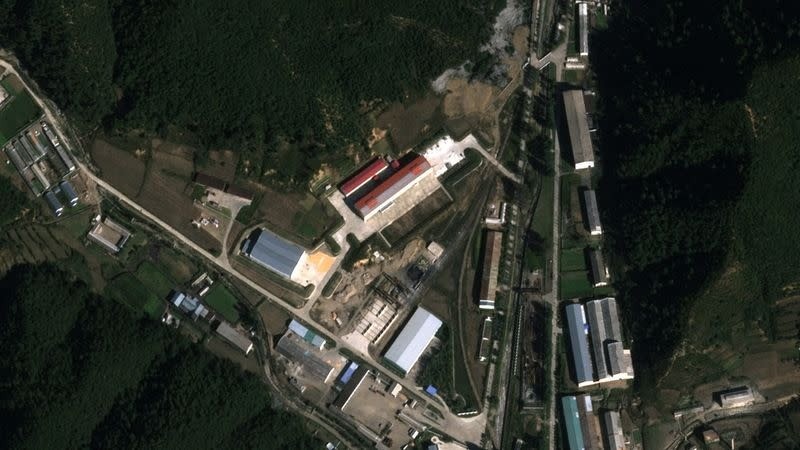
Satellite images have revealed that North Korea is expanding a key missile manufacturing plant, known as the February 11 plant, which is part of the Ryongsong Machine Complex in Hamhung, the country's second-largest city. This complex is known for producing short-range ballistic missiles, including the Hwasong-11, which Ukrainian officials say have been used by Russian forces in their assault on Ukraine.
Sam Lair, a research associate at the James Martin Center for Nonproliferation Studies (CNS), said this plant is the only known site producing the Hwasong-11 class of solid-fuel missiles, which are also referred to as the KN-23 in the West. The expansion of the facility, which had not been previously reported, was identified through satellite images from October 2023. These images show an additional assembly building under construction, along with a new housing facility likely intended for workers.
The expansion includes upgrades to the entrances of some underground facilities, with one key change being the removal of a disused bridge crane that had been blocking access to a tunnel. This suggests an effort to increase the production capacity of the facility. "We see this as a suggestion that they're massively increasing, or they're trying to significantly increase, the throughput of this factory," Lair said.
The new building, which is about 60 to 70 percent the size of the previous missile assembly building, signals a significant expansion in missile production capacity. In 2023, state media released images of North Korean leader Kim Jong Un inspecting new buildings at the complex, where workers were assembling parts for the KN-23 missiles.
The KN-23, first tested in 2019, is designed to fly on a lower trajectory, evading missile defenses. Experts believe this makes the missile potentially useful for Russia, which has been searching for ways to penetrate Ukraine’s air defenses. Russia has already fired thousands of missiles in the conflict, and relying on North Korea for additional supplies could ease the strain on its own production lines, Lair noted.
North Korea’s state news agency KCNA has confirmed that the Ryongsong Complex is undergoing modernization, including rebuilding production facilities and installing new equipment. Satellite imagery firm SI Analytics also verified the new construction at the February 11 plant, suggesting rapid progress in the work. The construction near the loading area appears to be designed to conceal the factory’s operations from satellites.
Michael Duitsman, another researcher at CNS, said it’s likely the new building is an assembly facility rather than a storage facility, as previously speculated.
While North Korean missiles account for a small portion of Russia’s strikes on Ukraine, their use has raised concerns in Seoul and Washington. It suggests a shift in the U.N. Security Council’s longstanding stance against expanding North Korea’s missile capabilities.
In addition to missile production, SI Analytics reported construction at the nearby February 8 Vinalon Complex, which is believed to produce fuel for ballistic missiles. This construction could increase the production of solid propellants and UDMH, a crucial fuel for rocket engines.
Joseph Dempsey, a military analyst with the International Institute for Strategic Studies, speculated that the expansion of North Korea’s missile facilities is primarily aimed at strengthening its own missile stockpile, although he acknowledged the possibility that some of the production may be directed toward Russia.
North Korea has also deployed more than 10,000 troops to the Russian region of Kursk, where they are reportedly joining Russian airborne units and marines in the Ukraine conflict. Russia has not denied the involvement of North Korean troops in the ongoing war.